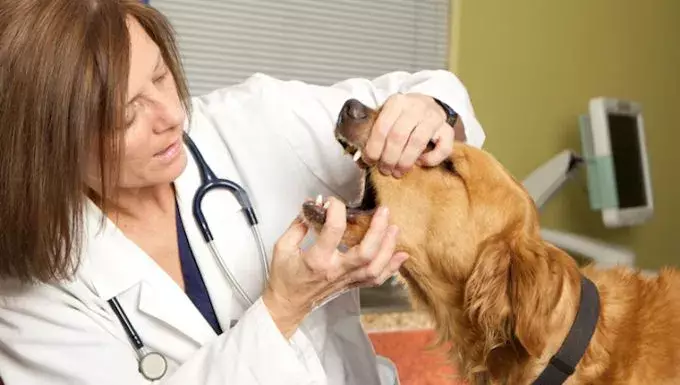Gingival fibrosarcoma represents a serious health concern in veterinary medicine, specifically manifesting as a malignant tumor located in the gums of dogs. This condition is particularly alarming due to its potential to disrupt oral health significantly and impact the dog’s overall well-being. As such, awareness and understanding of this cancer type can aid pet owners in recognizing early symptoms, leading to timely veterinary intervention.
Gingival fibrosarcoma is a type of oral cancer that primarily develops in the gum tissues of dogs. While theoretically, any dog can be diagnosed with this condition, studies indicate that it occurs more frequently in older dogs, particularly those aged seven years or older. The predisposition seems slightly greater in male dogs compared to female counterparts, raising questions about hormonal or genetic factors at play. Furthermore, the Golden Retriever breed appears to be disproportionately affected, suggesting a potential breed-specific genetic susceptibility.
Detecting gingival fibrosarcoma early can be challenging due to its subtle onset. Common clinical signs associated with this condition should raise flags for dog owners. Symptoms may include excessive drooling, persistent bad breath, and difficulty in eating. As the tumor progresses, pet owners may notice weight loss, visible growths in the mouth, or even blood originating from the oral cavity. Loose teeth and swollen lymph nodes are also concerning indicators that necessitate veterinary evaluation. Understanding these symptoms is crucial for quick action; the earlier the diagnosis, the better the prognosis.
While the exact cause of gingival fibrosarcoma remains largely unknown, several factors have been proposed that could contribute to its development. Aging appears to be a significant risk factor, alongside exposure to radiation or certain chemicals. Dental infections could also play a role in predisposing dogs to this type of tumor, raising the importance of regular dental check-ups in promoting oral health and preventing potential complications.
If signs of gingival fibrosarcoma are observed, pet owners should consult a veterinarian promptly. The diagnostic process typically involves a thorough review of the dog’s medical history and a comprehensive physical examination, where the vet will inspect the mouth for any abnormalities. It is crucial that pet owners provide detailed accounts of symptoms and any notable changes in their dog’s behavior prior to the visit. Confirmatory diagnosis often necessitates a biopsy from the affected area, allowing the veterinarian to assess the tissue type and appropriate malignancy level.
The treatment approach for gingival fibrosarcoma varies based on the severity and extensiveness of the tumor. Small localized tumors may be addressed through cryosurgery, a technique that involves freezing the tumor to facilitate its removal. More significant tumors may necessitate surgical excision, which can entail more intensive procedures and longer recovery times. Radiation therapy is another potential treatment option, particularly in cases where surgical intervention is insufficient.
Post-treatment care is essential for the dog’s recovery, often requiring dietary adjustments to softer or wet food to accommodate any oral discomfort. Veterinarians will generally prescribe pain medications to manage discomfort during recovery. It is vital for pet owners to strictly adhere to prescribed dosages and complete the entire course of medication to ensure their pet’s health is restored effectively.
Caring for a dog diagnosed with gingival fibrosarcoma can be a challenging ordeal for any pet owner. Understanding the symptoms, potential causes, and treatment options allows for an informed approach, making it easier to navigate the complexities of veterinary care. While this condition poses significant challenges, timely diagnosis and appropriate management can greatly improve the quality of life for affected dogs. Sharing experiences and seeking veterinary assistance play pivotal roles in supporting not only the dog’s health but also the emotional well-being of both the pet and the owner throughout this taxing journey.

